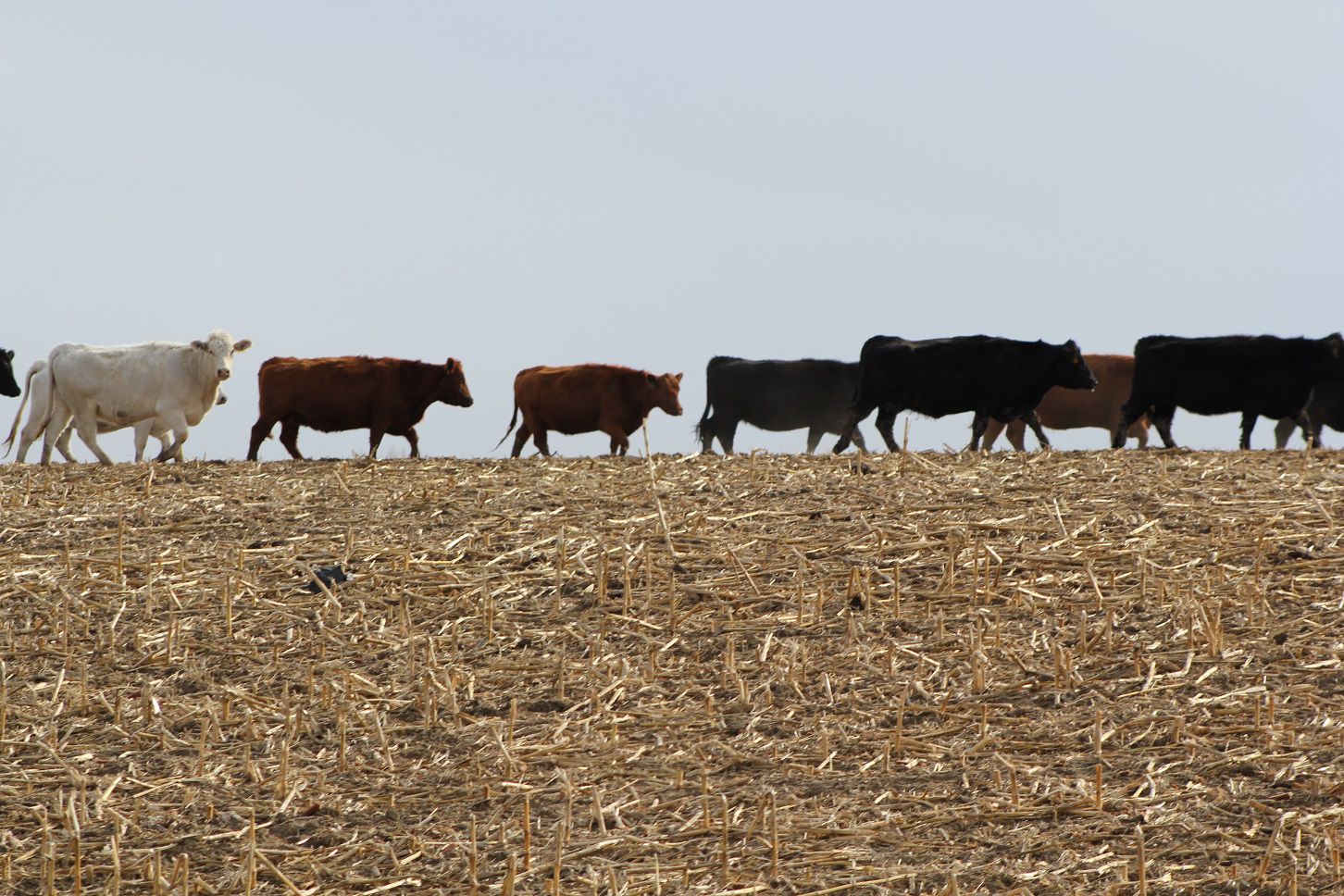About half of the available corn residue in Nebraska is grazed by cattle. In addition to providing a winter feed resource, this practice can be used as a management option to increase the amount and rate of corn residue breakdown. University of Nebraska-Lincoln research has shown that when corn residue was grazed at proper stocking rates (15 percent residue removal), crop production after grazing was not reduced. In fact, small, positive impacts on subsequent soybean yield has occurred.
UNL recommendations for establishing corn residue stocking rates are based on 50 percent utilization of leaves and husks (eight pounds per bushel or 20 percent of the total corn residue). Some additional corn residue disappears through trampling and wind loss, but we have not found increased erosion when only 40 percent to 50 percent of the corn residue is removed through grazing. Other factors such as fencing and water availability can be issues with corn residue grazing. Lack of access to cattle is another common reason that corn residue is not grazed.
The Crop Residue Exchange is an online engagement tool designed to increase the convenience and accessibility of grazing crop residues. This online exchange assists corn and other crop producers to market crop residue to cattle producers.
A new feature is the “other” category where producers can list forage cover crops for grazing. This interactive, online tool helps farmers and cattle producers connect and develop mutually beneficial agreements to use crop residue and forage cover crops for grazing.
After establishing a log-in account, farmers can list cropland available for grazing by drawing out the plot of land available using an interactive map. They can then enter basic information about the type of residue, fencing situation, water availability, and dates available and provide their preferred contact information. Grazing rates listed in 2018 have ranged from $0.75 to $1 per head per day for fields that were fenced or partially fenced and included water and animal care. There are also some listed at $15 per acre with water onsite but unfenced and no care provided.
Livestock producers can log in and search the database for cropland available for grazing within radius of a given location of interest.
Development of the Crop Residue Exchange was made possible with funding support from the Nebraska Extension Innovation Grants Program.
Interviews with the authors of BeefWatch newsletter articles become available throughout the month of publication and are accessible at go.unl.edu/podcast.


